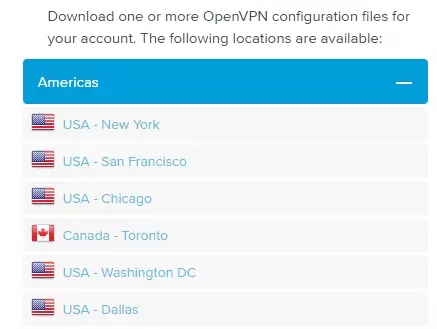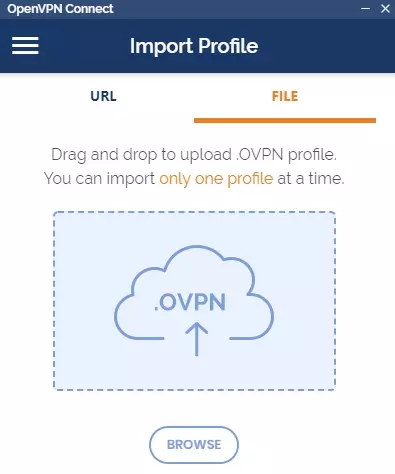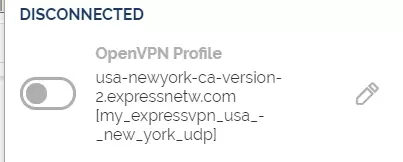We recommend these VPNs to use on Windows
In this guide, we will show you how to install and set up a VPN on Windows 10. There are two different ways you can accomplish this. The first is how to set up an off-the-shelf VPN client. The second is for more advanced users. We will also provide detailed walkthroughs for the three most important manual set up methods: IKEv2, L2TP/IPsec, and OpenVPN.
What do you need to set up a VPN on Windows?
The quickest and most straight-forward way to set up a VPN on Windows is to subscribe to a service that provides a specific Windows VPN app. To get a subscription up and running, all you will need is:
- A valid email address
- A password
- A valid payment method (some providers accept anonymous methods of payment such as gift cards or cryptocurrency)
Providing you have this, you can follow the steps below.
How to set up a VPN on Windows using a VPNs software
This is by far the easiest method to set up a VPN on Windows. An off-the-shelf VPN client will be specifically designed to work on Windows 10 PCs and will usually be backward compatible with older machines running Windows 8.1 or Windows 7.
To install this kind of VPN software, follow these steps:
-
Choose a provider that has VPN software for Windows (which is most of them these days).
We recommend NordVPN because it has a great app for Windows machines and an affordable subscription package.
![Install vpn windows nordvpn price]()
-
Subscribe to the VPN and set up a password for your account.
![Install VPN Windows NordVPN Account]()
-
Download the Windows VPN software from the provider’s website.
![Install Windows VPN Download NordVPN]()
-
Locate the downloaded file (Probably in your Downloads folder, but could be somewhere else) and double-click the .exe file to begin installing the VPN on your machine.
![Install Windows VPN Install NordVPN]()
-
Agree to install any required components.
What you need to install will depend on your VPN provider but could include things like TAP drivers, antivirus and so on.
-
Double click the VPN icon on your desktop and log in using the username/password you chose when you subscribed.
![Install Windows VPN Sign up NordVPN]()
-
Once logged in, you are ready to connect to a server in the country of your choice and start using the VPN.
What do you need to set up a VPN on Windows manually?
If you prefer to install a VPN manually, or you've chosen one that doesn't offer a GUI client, you will need to obtain a few things from your provider first, including:
-
Your login details - Username & password
-
A VPN server name & IP address
We recommend that you opt for L2TP/IPsec, IKEv2, or OpenVPN encryption. For more info, check out our guide to VPN encryption.
-
VPN config files
Once you have these details, you're ready to follow the steps below.
How to configure a VPN manually on Windows
These details are specific to each VPN provider, which means that you will need to contact your VPN's support team, or check their knowledge base to ensure that you have everything you need before you start the manual setup process.
Once you have the necessary information, we're ready to get started!
-
Navigate to Settings > Network & Internet
![Windows VPN Manual Set up]()
-
Click VPN on the left to open the setup menu
![Manual Set Up Windows VPN]()
-
Click Add a VPN connection
![Add a connection]()
-
In the VPN provider box, select Windows (built-in)
![Windows Built-in VPN Connection]()
-
In the Connection name box, give your VPN connection a name.
Please note: If your VPN provider requires you to connect using a particular name, you will need to use that to continue. Check with your specific provider before you begin this process.
-
In the Server name or address box, type in the name/IP address your VPN has given you.
In Windows 10, it is impossible to set up a VPN connection without the URL or IP address of your VPN’s server.
-
Under VPN type, select the protocol that you wish to use.
This is your choice but depends on what options are available to you with your particular provider. If possible, we recommend that you opt for L2TP/IPsec, IKEv2, or OpenVPN as these are the most secure options.
![Windows VPN Automatic Protocol]()
Please note: Selecting the wrong encryption type can cause issues. If the VPN does not work after you finish setting it up, try again and choose Automatic at this stage instead.
-
In the Type of sign-in info box select Username and password.
Enter the username and password you created when you signed up to your VPN.
![Manual Set Up Windows VPN Info]()
With everything now filed correctly, make sure to tick the Remember my sign-in info before you click the Save button on the bottom right.
-
You will now be taken back to the VPN set up screen, where your manual set up will now be listed. Click on it and select Connect.
![Connect to Windows VPN Manually]()
-
The VPN will connect to the server that you set up.
How to set up OpenVPN on Windows 10
OpenVPN is widely regarded as the most secure VPN encryption protocol. This is because it has been audited regularly and is known to be secure against eavesdroppers.
The easiest way to connect to your VPN using OpenVPN is to use the provider's specific client for Windows. Most providers offer OpenVPN as an option, though there are some who choose to go with WireGuard or IKEv2 instead. To make sure OpenVPN is the selected encryption protocol:
-
Open your VPN client.
-
Click on the settings icon.
-
Select encryption protocols.
-
Now select either OpenVPN TCP or OpenVPN UDP (we recommend the latter because it is faster).
Setting up a Windows VPN in the OpenVPN Client
If you prefer to connect to your VPN service using the official third party OpenVPN client, please follow the steps below:
-
Contact your VPN provider and download the .ovpn config file for the server you require
![Set Up Windows VPN Server List]()
-
Download and install the latest Windows OpenVPN software from OpenVPN. net
![Set Up Windows VPN OpenVPN]()
-
Once it has installed, click Finish
![Windows VPN set up Wizard]()
-
Run the OpenVPN software using the icon that will now be on your desktop
![Set Up Windows VPN OpenVPN Connect App]()
-
Click on File in the top right of the client, and drag the .vpn file that you downloaded from your VPN provider into the box. Alternatively, click Browse to find the file manually.
![Drag and Drop .ovpn profile]()
-
The client will now say Profile successfully imported.
Enter your VPN username and password below the server fields and tick the box Connect after import.
![Set up Windows VPN OpenVPN Imported Profile]()
-
Once all the fields have been filled out, click Add in the top right. The VPN will now automatically connect.
-
To connect in the future, run the OpenVPN Connect app and toggle the slider to the ‘on’ position to connect.
![Connect and Disconnect OpenVPN Slider]()
How to change protocols on a manual VPN setup
If you have set up your VPN manually, you cannot simply change the protocol with a mouse-click. Instead, you must set up another manual connection (as described above) using config information obtained from your VPN provider for the new protocol that you want to use.
To do this, ask your VPN for the connection settings information you require and follow the same steps to set up a new VPN connection to a server using this different protocol.
If you set up your VPN by downloading the official Windows app, you can change the protocol by following these steps:
-
Run the VPN client for Windows.
-
Click on Settings.
-
Click on Encryption Options or Protocol Settings.
This may be called something different in your VPN software but the steps should be broadly similar.
![Set up Windows VPN protocol settings]()
We recommend that you opt for OpenVPN UDP, OpenVPN TCP, IKEv2 or L2TP/IPsec because these are the most secure protocols available in 2025
How to install a VPN on Windows 8.1 or Windows 7
Official support for Windows 7 has now ended, which means that Windows 7 will not receive any more patches or updates. This means you will be vulnerable to any new hacks or exploits that might be discovered in the future. Windows 8.1 has extended support until Jan 2025. However, that support is not available to most home users, it's targeted at business users. Mainstream/consumer support for Windows 8.1 ended in 2018.
If you are using one of these older versions of Windows, we would strongly recommend that you upgrade as soon as possible. Failure to do so could leave you open to any hackers that might want to target your system, steal your data, and infect you with dangerous malware.
For this reason, we strongly urge you to concentrate on updating your system to a properly supported version of Windows, rather than trying to install a VPN on an outdated version.
Update your system to Windows 10 so that it is secure against the most recent threats. Once you have this supported operating system installed, you can use this guide to install a VPN safely.




















